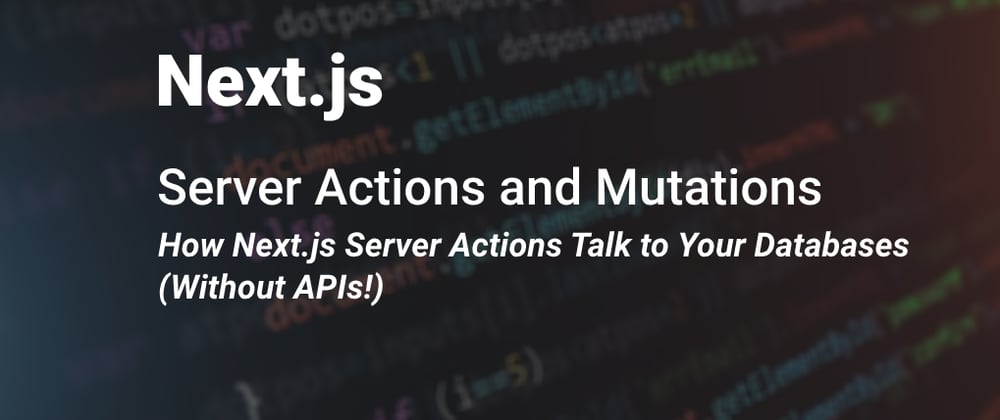The Data Whisperer: How Next.js Server Actions Talk to Your Databases (Without APIs!)
In the realm of web development, Next.js continuously pushes boundaries, empowering developers with innovative tools for crafting exceptional user experiences. Among its recent advancements, Server Actions and Mutations stand as a formidable addition, redefining server-side data management and interaction within Next.js applications. This article delves into the intricacies of these features, guiding you through their implementation, benefits, and best practices.
Key Concepts
Server Actions:
- Asynchronous functions executed exclusively on the server.
- Invoked directly from Server Components or Client Components via form submissions, events, or other mechanisms.
- Handle server-side tasks such as:
- Form processing
- Data mutations
- Database interactions
- External API calls
- Authentication and authorization
Mutations:
- A specific type of Server Action dedicated to data modification.
- Interact with data sources (e.g., databases) to create, update, or delete data.
- Integrate with Next.js caching and revalidation features for seamless data consistency.
Implementation
Defining Server Actions:
// In a Server Component or a `lib/actions` directory
export async function createPost(data) {
// Perform data validation, access a database, etc.
const postId = await db.insertPost(data);
return { postId };
}
Invoking Server Actions:
- From a Server Component:
export default async function PostForm() {
const { data, setData } = useState({});
const handleSubmit = async (event) => {
event.preventDefault();
const { postId } = await createPost(data);
// Redirect or handle success
};
// ... form elements
}
- From a Client Component (using fetch with action attribute):
<form action="/api/create-post" method="post">
{/* ... form elements */}
<button type="submit">Create Post</button>
</form>
Key Advantages:
- Enhanced Security: Server-side execution safeguards sensitive data and logic.
- Improved Performance: Server-side rendering optimizes page load times and SEO.
- Simplified Data Handling: Streamlined interaction with databases and external APIs.
- Caching and Revalidation: Ensures data consistency and reduces server load.
- Better User Experience: Enables smooth form submissions and real-time updates.
Best Practices:
- Prioritize Server Actions for sensitive operations.
- Utilize Mutations for data modification tasks.
- Implement robust error handling and validation.
- Consider security implications for each action.
- Structure actions logically for maintainability.
- Leverage Next.js caching and revalidation strategies.
Additional Considerations:
- Data Fetching: Server Actions can fetch data for components.
- Authentication and Authorization: Protect actions with middleware.
- Testing: Write comprehensive tests for Server Actions.
Conclusion
Server Actions and Mutations in Next.js provide a powerful and flexible approach to server-side data management. By understanding their capabilities and best practices, developers can create more secure, performant, and user-friendly web applications that excel in both functionality and user experience. Embrace these features to unlock the full potential of Next.js and elevate your web development endeavors.







Top comments (0)